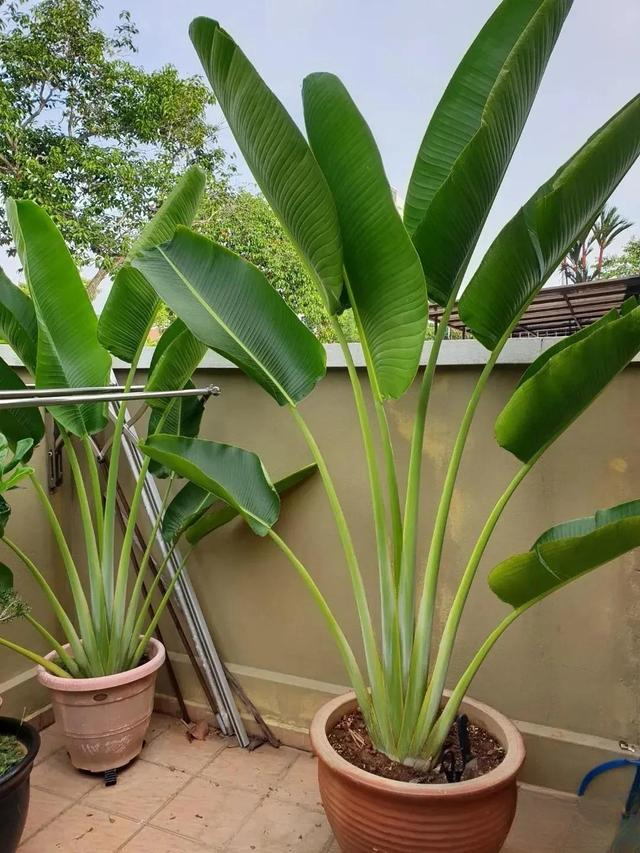Common shrubs in the garden
Shrubs refer to trees without obvious trunks and growing in clusters. They are generally classified into several categories, such as ornamental flowers, ornamental fruits, and ornamental branches. They are short and clumping woody plants. They are perennial. They are generally broad-leaved plants, and some coniferous plants are shrubs, such as juniper. Many types of shrubs are cultivated as horticultural plants because of their small size and are used to decorate gardens.
The shrubs commonly used in courtyards are:
1. Cordyceps sinensis
[Distribution] Commonly cultivated in Guangdong, Guangxi, Fujian, Taiwan and other provinces. The origin is unknown, and it is now widely planted in warm areas of Asia.
[Features] The leaves are clustered at the top of the stem, lanceolate to oblong. It likes hot and humid climates, is not cold-resistant, requires acidic soil rich in humus and well-drained, avoids alkaline soil, and is not drought-resistant.
[Ornamental Value] Cordyceps sinensis has a beautiful shape and gorgeous and elegant colors. Potted plants are suitable for indoor decoration. Potted young plants can be used to decorate guest rooms and window sills, which is elegant and unique. They can be placed in groups in meeting places, public places, and entrances and exits of halls and rooms, which are dignified, neat, fresh and pleasing to the eye. Several pots can be placed in display windows and tea rooms, which makes them more elegant and luxurious.
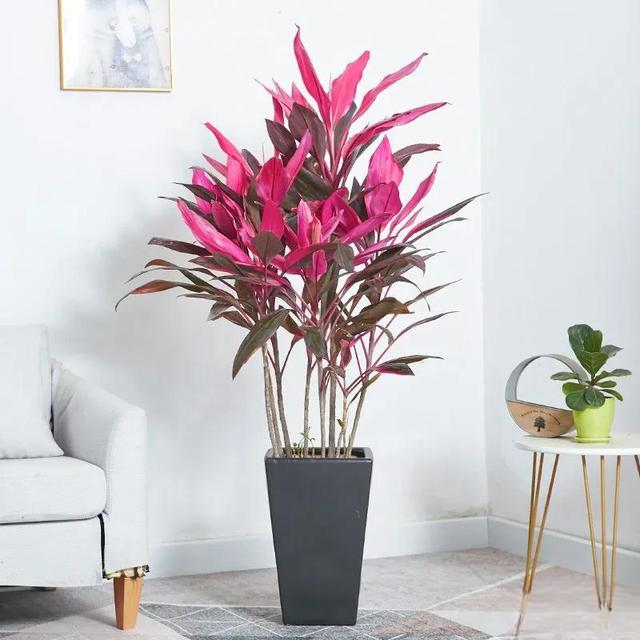
2 Octagonal Gold Plate
[Distribution Range] Native to southern Japan, North China, East China and Kunming gardens in Yunnan.
【Characteristics】 The inflorescence is large, the flowers are milky white, and they bloom in summer and autumn. They like warm and humid climates, are shade-tolerant, not drought-tolerant, and have a certain degree of cold resistance. They are best planted in well-drained and moist sandy loam.
[Ornamental Value] Excellent foliage plant. The leaves of the golden plate are evergreen all year round and are large. The leaves are beautifully shaped, dark green and shiny, and are very popular indoor foliage plants. It is suitable for indoor low-light environments and is a common plant material for beautification of hotels, restaurants, office buildings and homes. It can also be used as a base for indoor flower beds. The leaves are also a good material for flower arrangement. It is suitable for planting in courtyards, beside doors, windows, corners of walls and in the shade of buildings. It can also be dotted beside the dripping streams, and can also be planted in groups on the edge of lawns and woodlands.
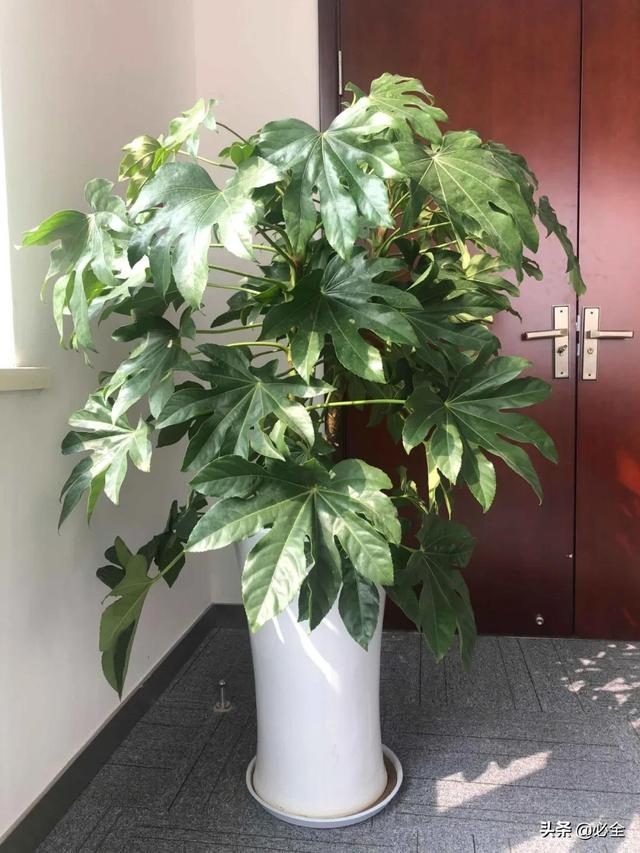
3. Codiaeum
[Distribution] Originated from the Malay Peninsula in Asia to Oceania; widely cultivated in tropical regions. Commonly cultivated in southern provinces.
【Characteristics】 The leaves are rich in color and there are many varieties. It likes a hot, humid and sunny environment, is not cold-resistant, likes moisture and is afraid of dryness.
[Ornamental Value] Croton has beautiful colors and postures due to its leaf shape and color changes. It is very popular among foliage plants. It is mostly used in parks, green spaces and gardens in South China. It can be planted in clusters or used as hedges. It is also grown as potted flowers in the Yangtze River Basin and the areas to the north to decorate rooms, halls and venues. Its branches and leaves are ideal for flower arrangement.
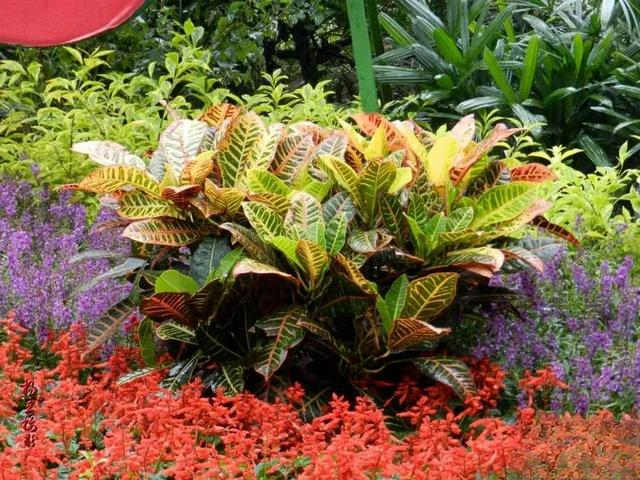
4 Schefflera variegated
[Distribution range] Distributed in the South Pacific Islands.
【Characteristics】 Alternate palmate compound leaves with terminal panicles. Prefers warm, hot and humid climates, grows fast, and is propagated by seeds. Prefers moisture and is afraid of dryness. Stems and leaves grow luxuriantly when the air humidity is high and the soil is moist. It has a wide range of adaptability to light and can grow in full sun, half sun or semi-shade environments.
[Ornamental Value] The plants are densely packed with neat and beautiful crowns, which can be used for ornamental purposes or as a shelter tree in gardens.
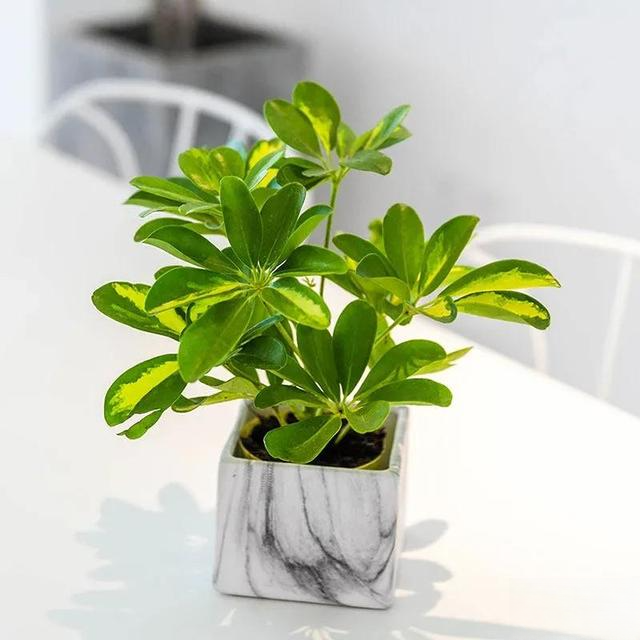
5 African Jasmine
[Distribution range] Originated in Taiwan, Hainan, Guangdong, Guangxi and southern Yunnan, distributed in India, Sri Lanka, Myanmar, Thailand, Laos, Vietnam, Cambodia, Indonesia, the Philippines, Malaysia. The type specimen of this species was collected from Colombo, Sri Lanka.
【Characteristics】 Leaves are opposite, oval, and umbel inflorescence. It likes warmth, sunshine, high humidity, and well-ventilated environment, and is not cold-resistant. It grows best in loose, fertile, and well-drained loam. It has strong germination and tillering ability and can tolerate repeated pruning.
[Ornamental Value] Its plump plant shape and emerald green leathery leaves are very pleasing, making it a popular indoor foliage plant. Its flowers are large and fragrant, and its branches and leaves are dark green, making it an ornamental plant for gardens.
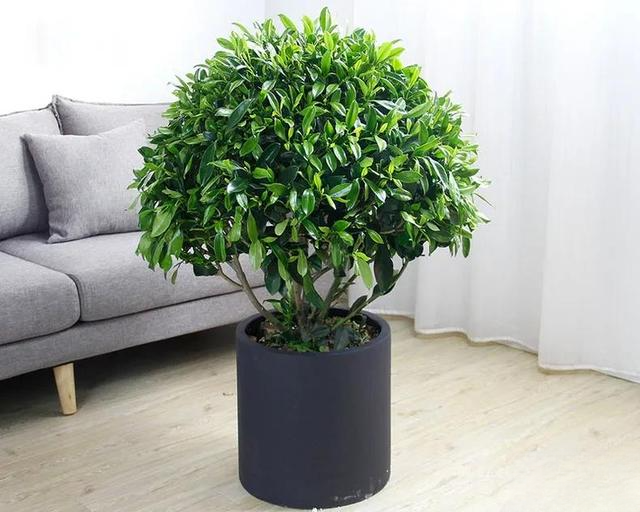
6 Fujian Tea
[Distribution Range] Distributed in Taiwan, Hainan and southwestern Guangdong. Grown in low-altitude plains, hills and open bushes.
【Characteristics】 Leathery leaves, dark green, white flowers. Prefers a warm, humid and sunny environment. Not cold-resistant, it can only survive the winter safely in temperatures above 5°C. It will be dormant or semi-dormant if it survives the winter at 5-10°C.
[Ornamental Value] The base and tree are vigorous and upright, with upright stems, small white flowers of icy jade-like texture, and densely lying branches that slant out. They are mostly used as potted plants for viewing. They are good tree species for making bonsai and can also be placed in the courtyard for viewing. Due to its strong growth and tolerance to pruning, it is often planted as a hedge in Fujian and Guangdong.
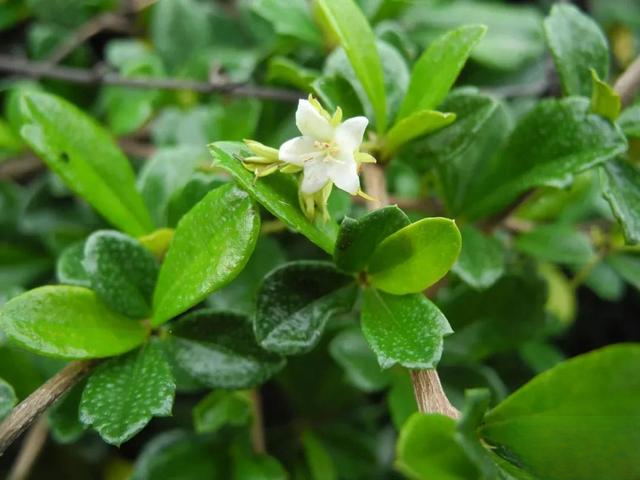
7Loropetalum scabra
[Distribution Range] Mainly distributed in the middle and lower reaches of the Yangtze River and the areas to the south; also distributed in northern India. Produced in Liuyang City, Changsha County, Hunan Province, Suzhou, Wuxi, Yixing, Liyang, Jurong, Jiangsu Province, etc.
【Characteristics】 The leaves are dark purple, ovate or elliptical. They like light and tolerate shade, but the leaves tend to turn green in shade. They are highly adaptable and drought-resistant. They like warmth and tolerate cold. They have strong germination and branching abilities and are resistant to pruning. They tolerate barrenness, but are suitable for growing in fertile, moist, slightly acidic soil.
[Ornamental Value] It has luxuriant branches and leaves, graceful posture, resistant to pruning and twisting, and can be used for hedges or stump bonsai. When it blooms, the tree is full of red flowers, which is extremely spectacular. Loropetalum suffruticosa is an evergreen plant with bright red new leaves. When different strains mature, the leaf color and flower color are different, and the leaf size is also different. In garden applications, the main considerations are the different effects brought by the two factors of leaf color and leaf size. It is widely used in color hedges, patterned flower beds, shrub balls, colorful small trees, stump landscape shapes, bonsai and other urban greening and beautification.
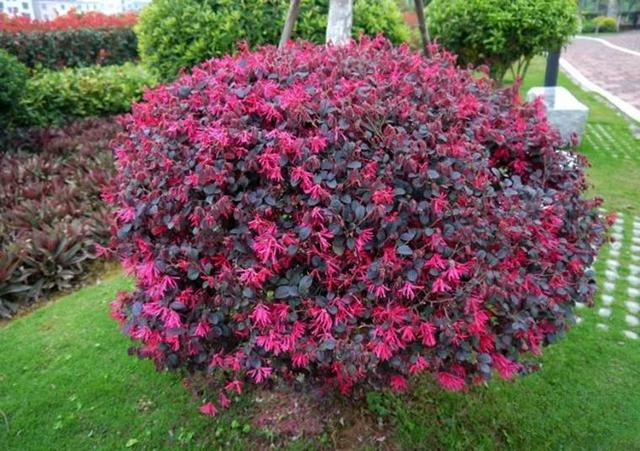
8 Forsythia suspensa
[Distribution range] Variegated Forsythia suspensa is native to tropical America and is widely cultivated for ornamental purposes in the south.
【Characteristics】 Leaves are opposite, nearly triangular, with yellow-white stripes on the leaf margins. Variegated Forsythia is strong, with strong germination and branching ability, no dormancy period, and can branch and sprout in all seasons. It is extremely resistant to pruning. It is a positive plant that likes light, has a certain shade tolerance, and can adapt to strong sunlight radiation. It likes a hot and humid environment, has low cold resistance, and is not drought-resistant.
[Ornamental Value] It is resistant to pruning and can be made into various shapes and planted in courtyards, in front of buildings, and in garden pieces. It is commonly planted alone, in pairs, in rows, or in combination with other plants to embellish and complement each other to form a rich and beautiful three-dimensional landscape. It is resistant to pruning and easy to dwarf, and can be used as a border plant for flower beds. It can also be planted in strips or blocks around lawns, in the middle, in clearings between forests, and in front of buildings. It is very beautiful and can be used as a hedge.
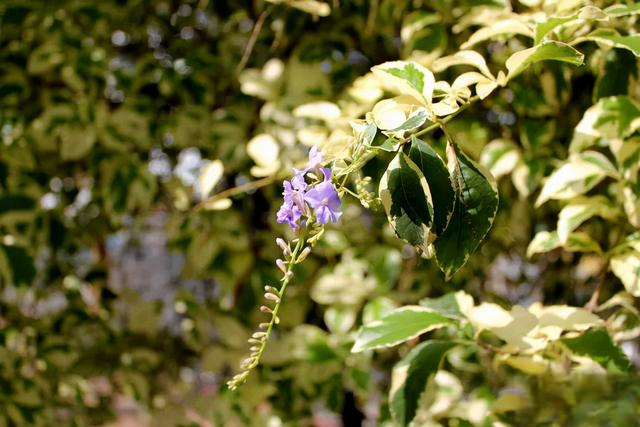
9. Alpinia officinalis
[Distribution Range] Variegated Alpinia galanga is native to the subtropical region and is distributed from the southeast to the south. It is cultivated in cities across the country.
【Characteristics】 The leaves have irregular golden vertical stripes. Prefer bright or semi-shaded environment. Relatively cold-resistant, but not severe cold-resistant, avoid frost. When the temperature is below 0℃, the plant will be frozen to death. Prefers a humid environment, relatively resistant to water and humidity, but not drought-resistant.
[Ornamental Value] Variegated Alpinia galanga is a plant with high ornamental value due to its vigorous growth, bright and eye-catching leaves, strong fragrance and elegant flowers. Generally, large potted plants are placed in the lobby of conference rooms, living rooms, etc. When cultivated outdoors, they can be planted in parks, courtyards, pools, fences and other shady and wet places, either in single clumps or in rows.
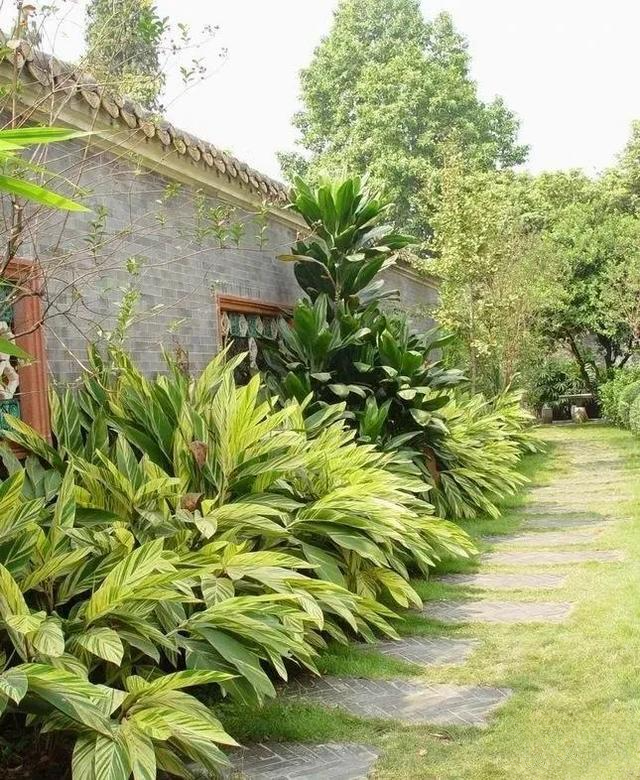
10 Nandina domestica
[Distribution Range] Produced in the Yangtze River Basin and Shaanxi, Henan Huangchuan Ptajima Town, Hebei, Shandong, Hubei, Jiangsu, Zhejiang, Anhui, Jiangxi, Guangdong, Guangxi, Yunnan, Guizhou, Sichuan and other provinces. It is also grown in Japan and India.
【Characteristics】 Old stems are light brown, young stems are red. Leaves are opposite, 2~3 leaves are doubled. It likes warm and humid environment, and is relatively shade-tolerant. It is also cold-tolerant. It is easy to maintain. The cultivation soil requires fertile, well-drained sandy loam, which can tolerate both moisture and drought.
[Ornamental Value] The stems are clustered, the leaves are lush, the leaves turn red in autumn and winter, and there are red fruits that do not fall for a long time. It is a good choice for viewing leaves and fruits. It grows wild in sparse forests and bushes. The leaves turn red under strong light, and it is also planted in gardens.
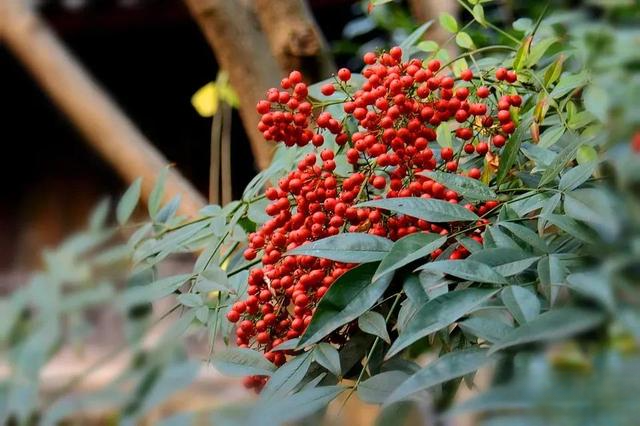
11 Poinsettia
[Distribution] Originated from Central America, it is widely cultivated in tropical and subtropical areas. It is cultivated in most provinces, autonomous regions and municipalities, and is often seen in parks, botanical gardens and greenhouses for viewing.
【Characteristics】 The leaves near the top of the inflorescence are bract-shaped and are scarlet when in bloom. It is a short-day plant that likes warmth, moisture, and sunlight.
[Ornamental Value] Poinsettia has bright colors and a long flowering period. It blooms during Christmas, New Year's Day, and the Spring Festival. Potted plants can be placed indoors to add to the festive atmosphere. They are also suitable for arranging public places such as meetings. They can be cultivated in the open field in the warm southern regions to beautify the garden, and can also be used as cut flowers.
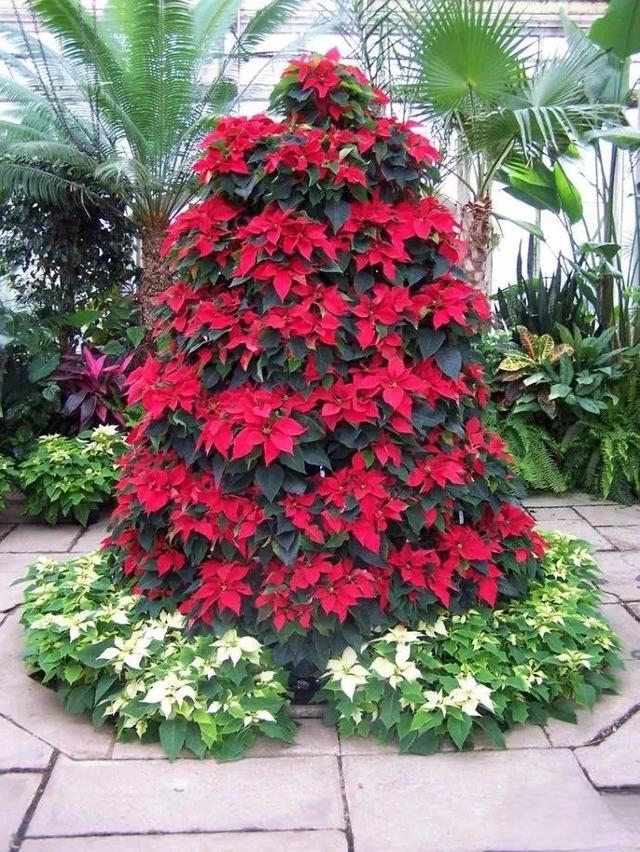
12 Milan
[Distribution] Produced in Guangdong and Guangxi; often grows in sparse forests or shrub forests in low-altitude mountains. Commonly cultivated in Fujian, Sichuan, Guizhou and Yunnan provinces. Distributed in Southeast Asian countries.
【Characteristics】 Leaves are obovate to oblong, flowers are yellow. It is shade-tolerant when it is a seedling, but prefers the sun when it grows up; it likes warm and humid climates and is afraid of cold; it is suitable for growing in fertile, loose, humus-rich, slightly acidic sandy soil.
[Ornamental Value] It can be used as a potted plant for viewing both leaves and flowers. The small yellow flowers are shaped like fish roe, so it is also called fish roe orchid. It has an attractive fragrance and is an excellent aromatic plant. The fragrance is overflowing during the flowering season. It can be used to decorate venues, foyers, courtyards and home decorations. In the falling season, it can be displayed as an evergreen plant outside the foyers and in front of buildings.
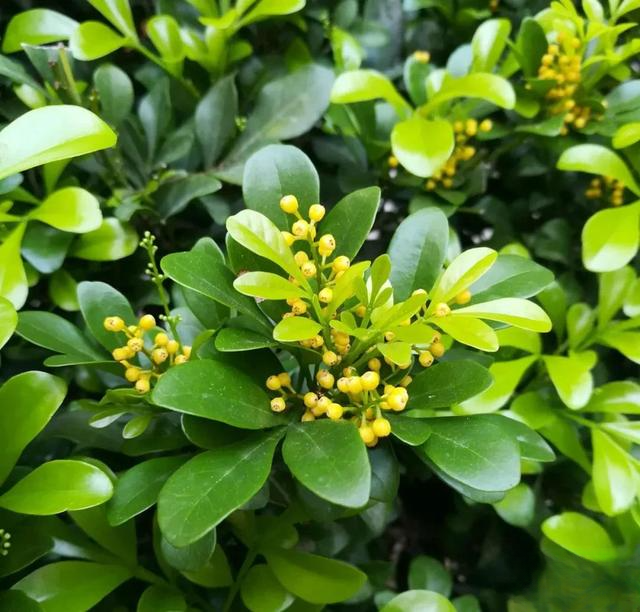
13 Colorful Hibiscus
[Distribution Range] The colorful hibiscus is mostly distributed in tropical and subtropical regions. It is widely cultivated in Guangdong, Guangxi, Fujian, Yunnan, Taiwan and other places.
【Characteristics】 The twigs are red, and the leaves are long oval or curled and cracked. The colorful hibiscus is a strong sun-loving plant. It likes warm and humid conditions and requires sufficient sunlight. It is not shade-tolerant, cold-tolerant, or drought-tolerant. It is tolerant to pruning, has strong branching ability, and has a wide range of soil adaptability.
[Ornamental Value] The colorful hibiscus has bright and eye-catching flowers. It blooms in the morning and withers in the evening, and is colorful. In the south, it is often planted by the pool, in front of the pavilion, on the roadside and by the wall. Potted colorful hibiscus is suitable for living rooms and entrances.
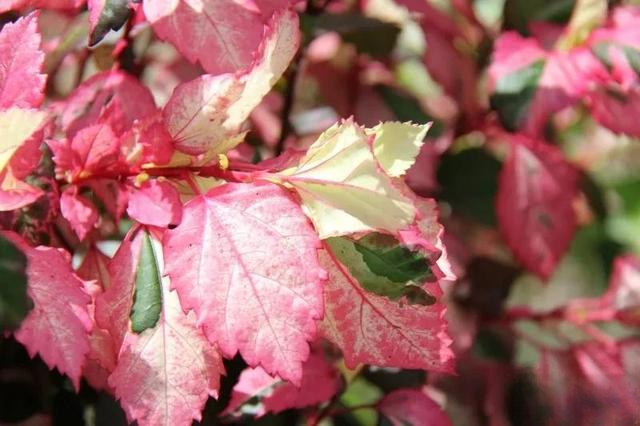
14 Red back laurel
[Distribution Range] Red-backed Osmanthus is native to the Indochina Peninsula and is mainly distributed in Taiwan, Guangdong, Guangxi, Sichuan, Yunnan and other places. It has a wide cultivation area and is also distributed in various countries in Southeast Asia.
【Characteristics】 Leaves are opposite, green on the surface and purple-red on the back. Originated from tropical rain forests, like warm environment, afraid of sunlight exposure, and tolerate semi-shade. Like loose and fertile acidic humus soil, not drought-tolerant, afraid of waterlogging, extremely intolerant to alkali, and requires a well-ventilated environment.
[Ornamental Value] Red-backed Osmanthus has a beautiful plant shape, dense branches and leaves, fresh and beautiful, and has great ornamental value. It is often used for greening courtyards, parks, residential areas, campuses, office areas, lawns, forest edges, etc.
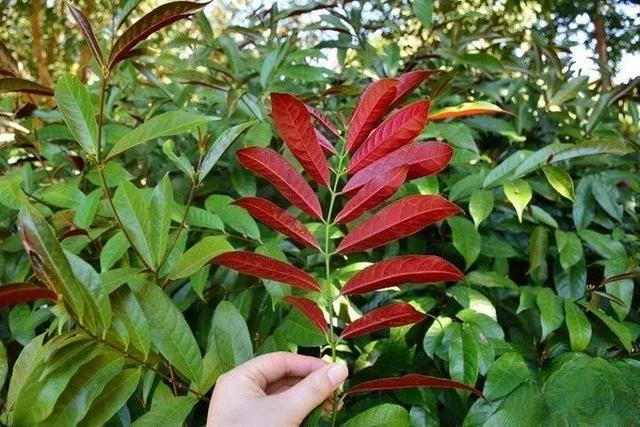
15 Banana
[Distribution Range] Native to the Ryukyu Islands, it may grow wild in Taiwan and is cultivated in most parts of the south and parts of Shaanxi, Gansu, and Henan.
【Characteristics】 It has a thick main vein, parallel veins on both sides, the leaf surface is light green, and the back is pink and white. Banana likes warm and humid climates, and requires deep, loose, fertile soil with good drainage.
[Ornamental Value] It can be planted in clusters in front of or behind the house, or in front of the window, creating a sense of shade and highlighting the elegant and beautiful appearance of banana. It is also often planted with other plants to form a landscape. Banana and bamboo are the most common combination. The growth habits, regional distribution, and charm of the two are quite similar, and they are known as "double purity". Banana can also be used as bonsai, which was a kind of plaything that the ancients liked.
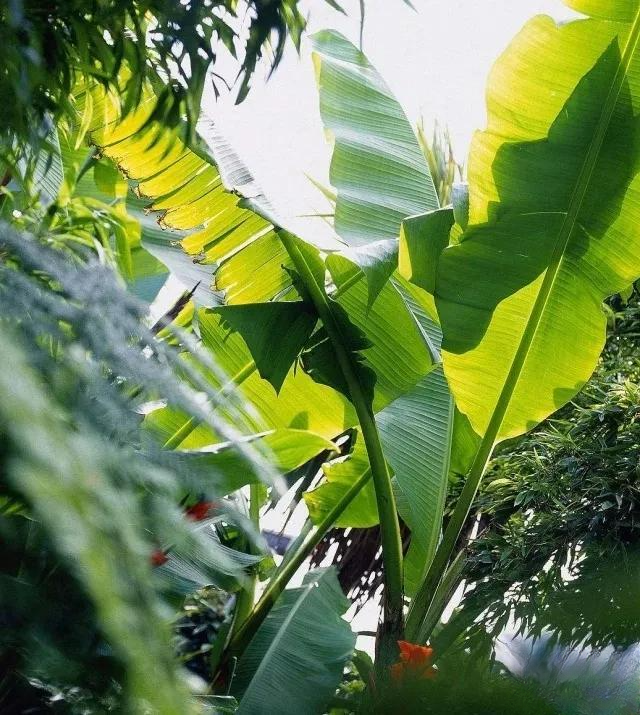
16 Bamboo
[Distribution Range] Mainly distributed in Southeast Asia, from the south to the southwest, and also in Japan. It often breeds and grows in shaded and moist bushes on hillsides and beside ditches.
【Characteristics】 The leaves are elegant, dark green and shiny. It likes a warm, humid and well-ventilated semi-shady environment. It cannot tolerate waterlogging, is extremely shade-tolerant, and is afraid of the scorching sun. When the summer is hot and the light is strong, it should be properly shaded. It requires loose and fertile acidic soil, is intolerant of barrenness and salinity, and requires higher soil humidity and air temperature.
[Ornamental Value] Bamboo palm is a typical indoor foliage plant. It is shade-tolerant, moisture-tolerant, and likes scattered light. It grows tall and straight, with luxuriant branches and leaves, a graceful posture, beautiful leaves, and green all year round. It looks like bamboo but is not bamboo, beautiful and elegant, and full of tropical scenery. It is the most widely cultivated indoor foliage plant for families. In the southern region, it is planted in clusters under large trees or beside rockery in the courtyard, forming a natural landscape of tropical mountains and forests. In the northern region, it can be potted, and large jungles can be placed on both sides of the entrance of conference rooms and hotels, which is quite elegant.
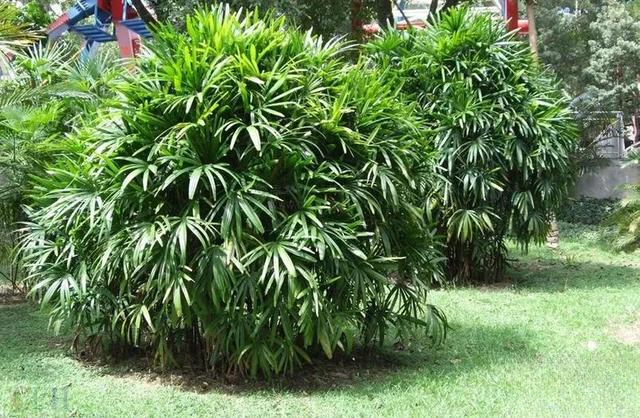
17 Areca palm
[Distribution] Originally from Madagascar, it is now introduced to southern provinces. It is suitable for growth in southern China and southwest China.
【Characteristics】 Grows in clusters, with many tillers at the base and pinnate leaves. It is a tropical plant that prefers warm, humid, semi-shaded environments. It is not very cold-resistant and is suitable for loose, well-drained, fertile soil. It is shade-tolerant and prefers warm, humid, semi-shaded and well-ventilated environments.
[Ornamental Value] Areca palm is a small palm plant that tolerates shade. In tropical gardens, it is often planted as an ornamental tree in the grass, under the shade of trees, and beside houses. In northern regions, it is mainly used as a potted plant. It is a high-end potted foliage plant for decorating living rooms, dining rooms, meeting rooms, family rooms, study rooms, bedrooms, or balconies.
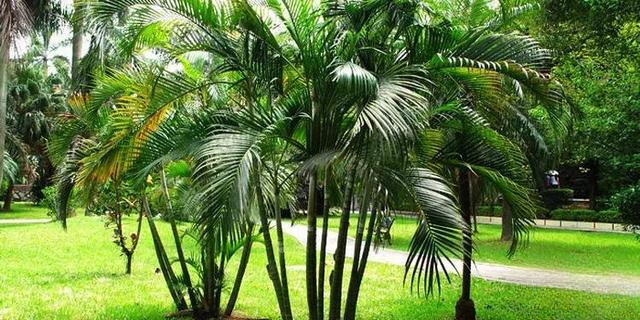
18. Boxwood
[Distribution] Originated from southern Japan. It grows wild in mountains below 1,300 meters above sea level. It is cultivated in many places in the Yangtze River Basin and south of it.
【Characteristics】 Slightly quadrangular twigs, densely growing branches and leaves, spherical crown. Positive species, light-loving and shade-tolerant, requires warm and humid climate and fertile soil. Acidic soil, neutral soil or slightly alkaline soil can adapt. Strong germination, strong adaptability, relatively cold-resistant, drought-resistant and barren.
【Ornamental Value】 In spring, the leaves begin to sprout, and the tree is full of tender green, which is very pleasing to the eye. The branches and leaves are dense and evergreen, and the plant is strong. It is usually planted as a hedge, but can also be pruned into a ball. The leaves are shiny and clean, and the new leaves are especially tender green. It is resistant to shaping and pruning, and is often used as a hedge material and shaping plant material in gardens, planted beside the door, on the lawn, or in the center of a large flower bed. Its variants have variegated leaves and can be potted for viewing.
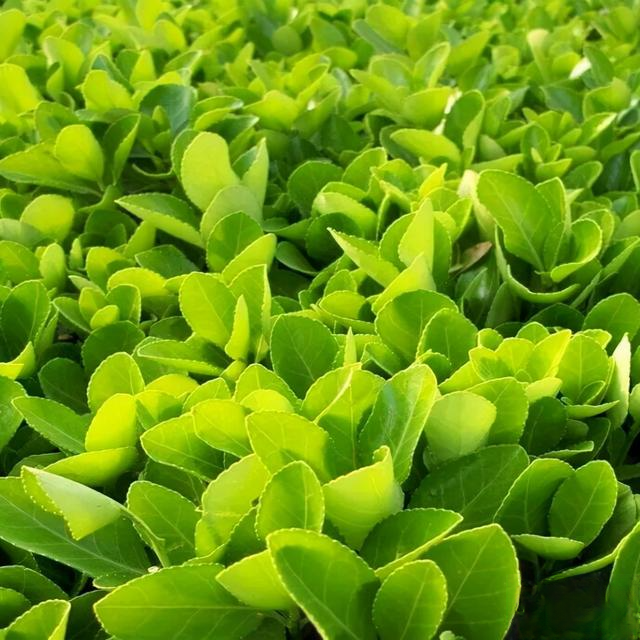
19 Golden Leaf Forsythia
[Distribution Range] Golden Leaf False Forsythia is native to tropical South America, from the West Indies, Mexico to Brazil, and has been introduced for cultivation in tropical regions around the world.
【Characteristics】 Leaves are opposite, ovate or obovate, golden to yellow-green in color. It is strong in nature, has strong germination and branching ability, can branch and sprout in all seasons, has no dormancy period, and is extremely resistant to pruning.
[Ornamental Value] In gardens and green spaces, hedges are often used as space dividers and barriers, and can also be used as backgrounds or edging around flower beds, flower borders, and ornamental lawns. They can be used as garden greening modeling plants. In addition, they can also be used as ground cover plants in large-scale block or strip dwarfing cultivation as ground cover, and as a background for woody flowers or tall trees.
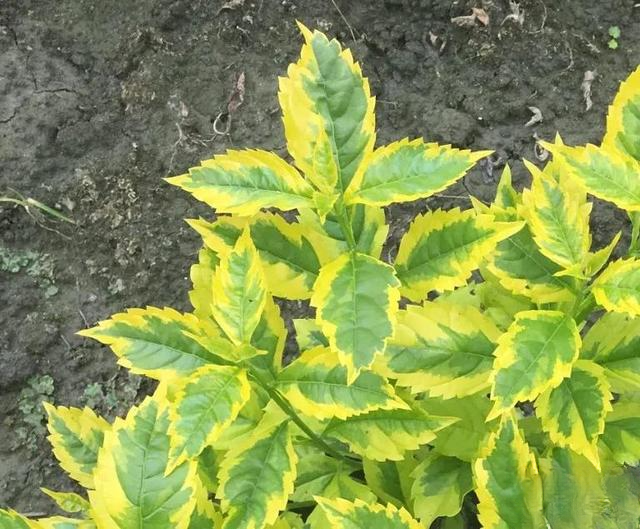
20 double petal hibiscus
[Distribution Range] It is native to Guangdong and Yunnan, has a long history of cultivation, and is now grown in various parts of the south.
【Characteristics】 The leaves are unlobed or 3-lobed, and the flowers are bell-shaped. It likes warm and humid climates. It is native to the south. It likes light and is a strong sun plant. It is not shade-tolerant. It likes warm and humid climates and is not resistant to cold and frost. It likes loose, fertile, well-drained soil and is tolerant to pruning.
[Ornamental Value] Hibiscus has bright colors, large and beautiful flowers, and a wide variety of varieties. It blooms all year round and is a famous ornamental flower. In addition to potted ornamental plants, it is also often used for greening on both sides of roads, dividing lanes, gardens, and waterfronts. Tall single-petal varieties are often planted as hedges or background screens.
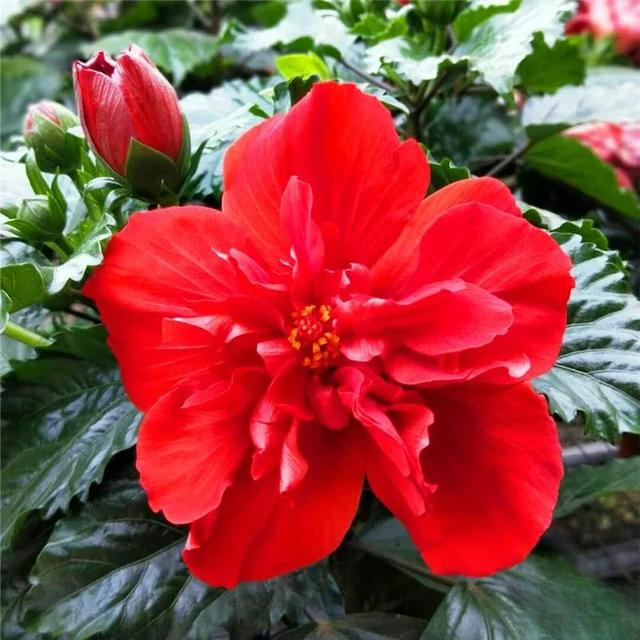
21 double large flower gardenia
[Distribution range] Native to China and Japan. Cultivated in provinces and regions south of central China, mostly found in large and medium-sized cities. Overseas, distributed in Japan.
[Features] Leaves are opposite or in whorls of 3 leaves, and the leaves are leathery. It likes a warm, humid, well-lit and well-ventilated environment, but avoids strong sunlight. It is suitable for living in a slightly shaded place, tolerates semi-shade, is afraid of stagnant water, is relatively cold-resistant, and is a typical acidic flower.
[Ornamental Value] Large-leaf gardenias are usually trimmed into balls and planted along streets or in park landscapes for landscaping. Their flowers are large, double-petaled, and beautiful, and are often cultivated for ornamental purposes.
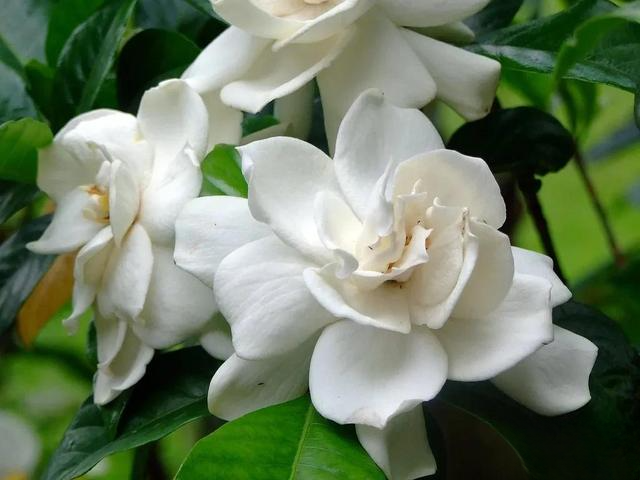
22 Ixora
[Distribution range] Ixora is native to China, Myanmar and Malaysia. It is mainly distributed in Fujian, Guangdong, Hong Kong and Guangxi. It is also found in tropical areas such as Vietnam, the Philippines, Malaysia and Indonesia.
[Features] Leaves are opposite, leathery, and cymes are terminal. Ixora is more suitable for high temperature and sufficient sunshine environment, likes humid and hot, is not resistant to low temperature, and likes acidic soil.
[Ornamental Value] Ixora has many uses in gardens, and a small number of varieties can be used for cut flowers; many varieties are suitable for potted plants, and are used in hotel decoration, conference venue settings, window sills, balconies and various guest room furnishings; Ixora in tropical regions is particularly suitable for outdoor planting, and is used in courtyards, hotel communities, roadsides and plant selection in various scenic spots. It is widely used in gardens, and solitary planting, cluster planting, row planting and patch planting all have their own characteristics.
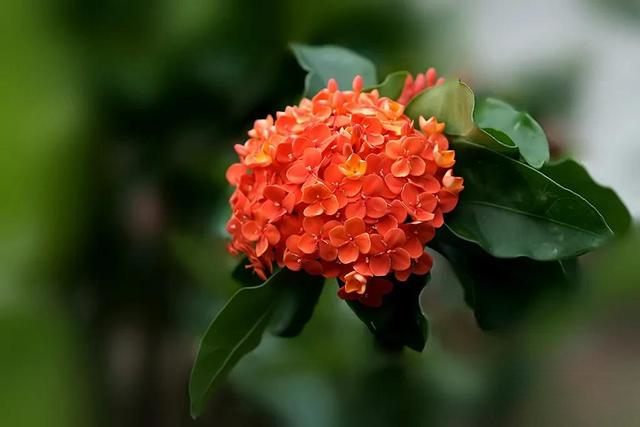
23 Lantana
[Distribution Range] It is native to tropical America and has been found in Taiwan, Fujian, Guangdong, and Guangxi. It is distributed in tropical regions around the world.
【Characteristics】 Multi-branched, square-columnar stem. Opposite leaves are ovate, wrinkled, and white on the back. It likes a warm, humid, sunny environment, is light-loving, drought-resistant, and not cold-resistant. It grows better in loose, fertile, well-drained sandy loam. It tolerates pruning and is mostly grown in potted plants north of the Yangtze River.
[Ornamental Value] Lantana has beautiful flowers and is an excellent ornamental shrub. It has a long flowering period and rich, colorful flowers. The flowers are yellow or pink at first, then turn orange or orange-red, and finally turn red. It is often cultivated in gardens for viewing. Lantana has a long flowering period and strong adaptability. It is often planted in clusters, ground covers, and hedges in gardens. It can also be used to decorate lawns and can be planted next to rocks. It can also be used for flower bed decoration. In the north, potted plants are used for indoor decoration or flower bed placement.
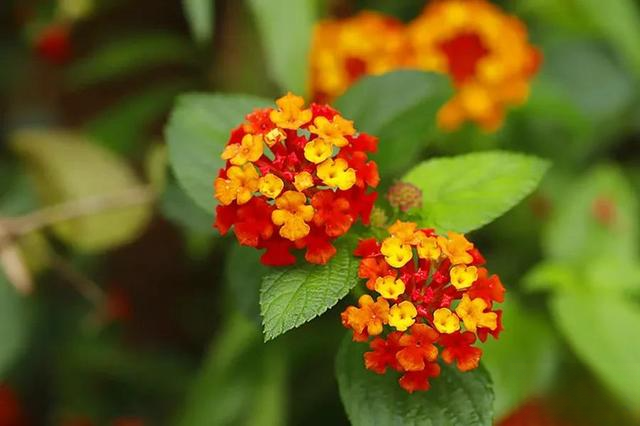
24 Soft-branched yellow cicada
[Distribution Range] Distributed in Guangxi, Guangdong, Fujian and Taiwan. Native to Brazil, widely cultivated in tropical regions of the world.
【Characteristics】 The corolla is funnel-shaped and five-lobed, golden yellow. It likes a warm, humid and sunny environment, is not cold-resistant, is resistant to high temperatures, drought, fertilizers, and pruning, and avoids stagnant water and saline-alkali land.
[Ornamental Value] The flowers of the soft-branched yellow hibiscus are orange-yellow, large and beautiful, and are for ornamental purposes. The soft-branched yellow hibiscus has certain insecticidal activity. In agricultural production and landscaping, the insecticidal activity of the soft-branched yellow hibiscus extract can be fully utilized to control pests.
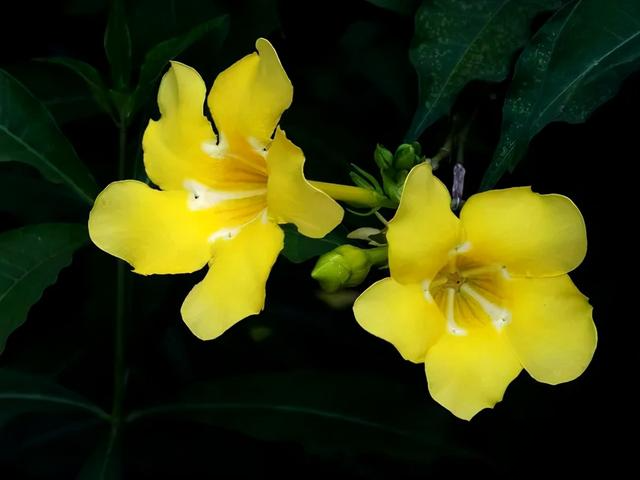
25 Photinia
[Distribution Range] It is mainly distributed in the subtropical and temperate regions of southeastern and eastern Asia and North America, and is also widely cultivated in many provinces.
【Characteristics】 The leaves are waxy, and the leaf stalks at the top of the branches are bright red all year round. It likes a warm and humid environment, has strong resistance to shade and drought, but is not resistant to water and humidity. It has good resistance to salt and alkali, is resistant to pruning, has no strict requirements on soil, is resistant to barrenness, is suitable for growing in slightly acidic soil, and is resistant to low temperatures.
[Ornamental Value] Photinia fraseri grows fast, has strong germination ability, and is resistant to pruning. It can be cultivated into different tree shapes according to the needs of the garden. It can be planted as a ground cover plant in the garden green space, or combined with other colorful leaf plants to form various patterns. During the red leaf period, the color contrast is very significant. It can also be cultivated into a small tree with an inconspicuous single trunk and a clump-shaped shape, and planted in groups to form a large hedge or curtain wall.
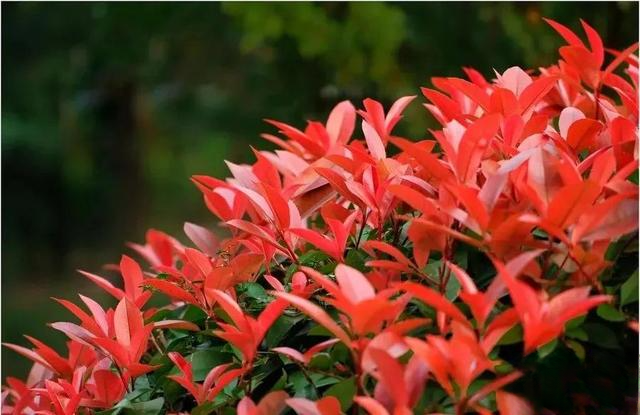
26 Ligustrum lucidum
[Distribution Range] Ligustrum lucidum is native to China and widely distributed in the Yangtze River Basin and the areas to the south. It is also cultivated in North China and Northwest China. It is mainly distributed in Jiangsu, Zhejiang, Jiangxi, Anhui, Shandong, Sichuan, Guizhou, Hunan, Guangdong, Guangxi, Fujian and other places.
【Characteristics】 Leaves are thin and leathery, with entire margins, spreading branches, and white flowers. It is cold-resistant and water-resistant, prefers warm and humid climates, and prefers light and shade. It has well-developed fibrous roots, grows fast, has strong germination ability, tolerates pruning, but cannot tolerate barrenness. It is not very demanding on soil, and is preferably cultivated in sandy loam or clay loam. It can also grow in red and yellow loam.
[Ornamental Value] Ligustrum lucidum is a common ornamental tree species in gardens. It can be planted alone or in groups in the courtyard, and can also be used as a street tree. Because of its strong adaptability, fast growth and tolerance to pruning, it is also used as a hedge.
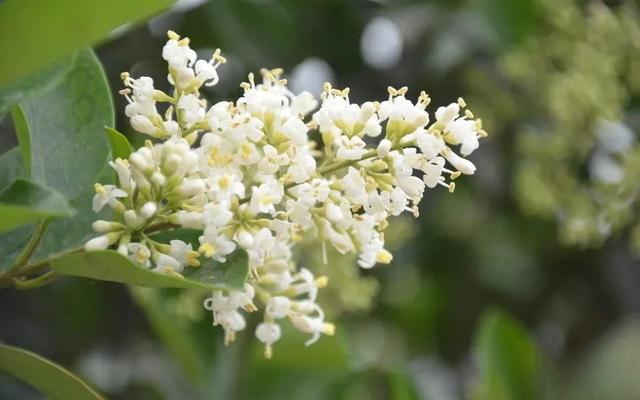
27 Oleander
[Distribution] Oleander is native to India, Iran and Nepal. It is cultivated in various provinces and regions, especially in the south. It is often cultivated in parks, scenic spots, roadsides, rivers and lakes. Those cultivated north of the Yangtze River must overwinter in greenhouses. It grows wild in Iran, India and Nepal; it is now widely planted in tropical regions around the world.
【Characteristics】 Three leaves arranged in whorls, corolla funnel-shaped, available in red and white. Prefers warm and humid climates, not very cold-resistant, not tolerant of water and humidity, requires high and dry places with good drainage for planting, prefers light and fertilizer, can also adapt to a shady environment, but the flowers are less and lighter in shade. Strong sprouting ability, easy to recover after damage.
[Ornamental Value] Oleander has willow-like and bamboo-like leaves, bright red flowers that are more beautiful than peach blossoms, and a pink to dark red or white corolla with a special fragrance. It blooms from June to October and is a famous ornamental flower. It is often cultivated in parks, scenic spots, roadsides, rivers, and lakes.
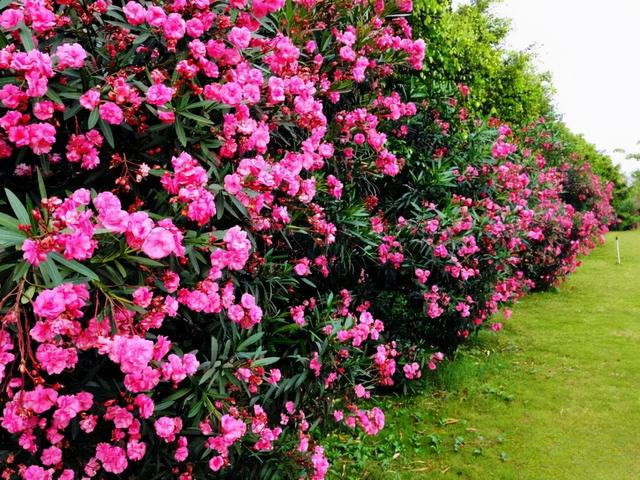
28 Yunnan Jasmine
[Distribution range] Distributed in southwest Sichuan, Guizhou, and Yunnan. Cultivated in various places. Growing in canyons and forests at an altitude of 500-2600 meters.
[Features] The branches are slender and arched, soft and drooping, and the flowers are light yellow. It likes warm, humid and sunny weather, is afraid of severe cold and waterlogging, is slightly shade-tolerant, and is best grown in well-drained, fertile acidic sandy loam.
[Ornamental Value] Wild jasmine is rough in nature, has strong adaptability, and is easy to cultivate. Its flowers are bright yellow and bloom in early spring. It has green leaves and yellow flowers and is a popular ornamental plant.
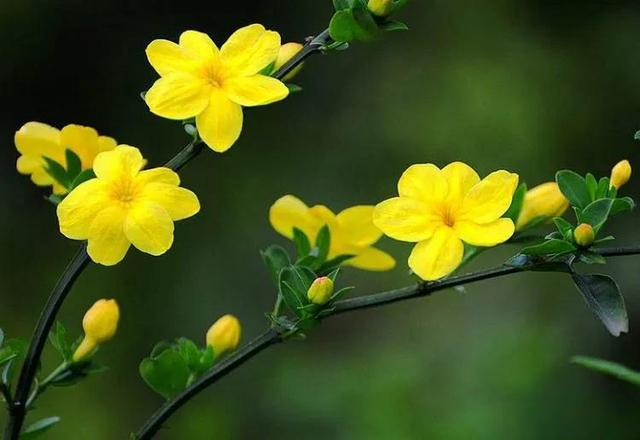
29 Dwarf Crape Myrtle
[Distribution Range] It is native to the temperate zones of eastern Asia and is widely distributed in East Asia.
【Characteristics】 The flowers are extremely luxuriant, and the branches are strong. It likes light and is drought-tolerant, and should be planted in a well-drained place.
[Ornamental Value] It can be used as a planting species for green belts, isolation belts, slope protection, and sand-sealing vegetation on highways, railways, levees, and river slopes. It can also be used as a hedge and color block planting species for greening and beautification of mining areas, residential areas, and scenic tourist areas. It can also be used as a flower bed plant configuration, or it can be planted individually to naturally form flower balls.
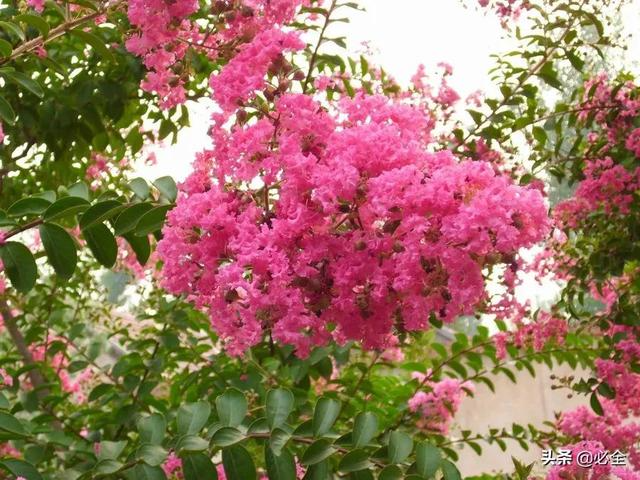
30 Soft Leaf Eryngium
[Distribution range] Eryngium radicans is naturally distributed in India, Myanmar, Thailand and Xishuangbanna, Yunnan. It is cultivated in southern, southeastern and southwestern China.
【Characteristics】 Leaves are pinnately lobed, with long strips of lobes. Riverside Eryngium grows vertically at an altitude of 480-900 meters, and is commonly seen on river banks. Neutral, can grow in full sun or in semi-shade. Relatively shade-tolerant, drought-tolerant, and barren-tolerant. Seedlings need a semi-shaded environment, and avoid being exposed to the sun. Prefers well-drained, fertile sandy soil. Not very frost-resistant.
[Ornamental Value] The plant is full, with arched branches and leaves like umbrellas, and the fine pinnate leaves are elegant and graceful. The leaves are evenly distributed and green and shiny, slightly curved and drooping. It is a good garden ornamental plant and can also be potted for viewing. In the southern tropical region, it can be used as a street tree and a landscaping tree species.
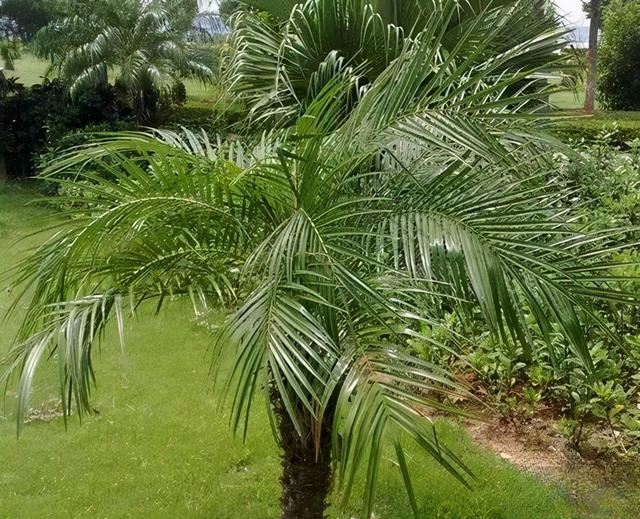
31 Strelitzia
[Distribution] Originated from southern Africa, it is cultivated in parks and flower gardens in large southern cities and in greenhouses in the north.
【Characteristics】 Leaves are opposite and arranged on both sides, with bracts outside the inflorescence. It is a subtropical long-day plant. It likes a warm, humid, sunny environment, and is afraid of severe cold, extreme heat, drought, and waterlogging. It requires well-drained, loose, fertile, sandy loam with a pH value of 6-7. The optimum temperature during the growing period is 20-28℃.
[Ornamental Value] Strelitzia reginae is evergreen all year round, with unique plants, clear and elegant feeling, and is a good choice for indoor viewing. In southern regions such as Fujian, Guangdong, Hainan, Guangxi, Hong Kong and Macau, Strelitzia reginae can be planted in clusters in the corners of the courtyard for courtyard landscaping and embellishment of flower beds and flower borders.
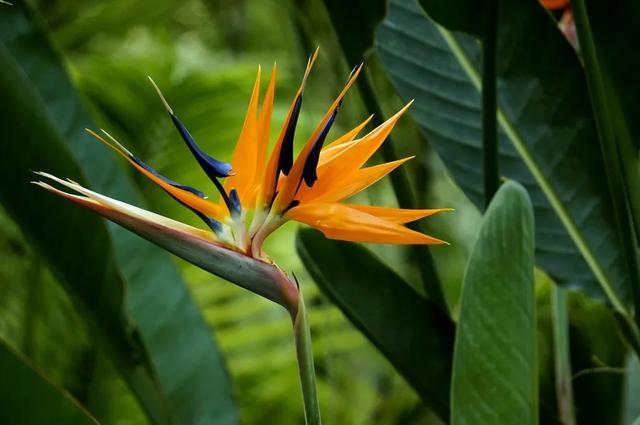
32 Traveler Sho
[Distribution Range] The traveler's palm is native to the African island of Madagascar. It is now cultivated in various tropical regions and can be found in Guangdong, Hainan, Shanghai, Beijing and Taiwan.
【Characteristics】 Leaves are arranged at the top of the stem in a narrow fan shape, and the scorpion tail cymes are axillary. It likes warm and sunny environment, and the suitable growth temperature is 15~30℃, and the temperature at night should not be lower than 8℃. It likes light and is suitable for growing in hot and humid climates.
[Ornamental Value] The traveler's palm has a unique and elegant shape and can be used as a large garden ornamental plant for courtyard greening. It can be planted alone, in clusters or in rows. In addition, the traveler's palm can also be planted in pots indoors in northern regions. The leaves are large and strange, with a graceful posture. It is used to decorate hotels, pavilions, corridors or forest gardens in tropical tourist attractions. It has a unique style and a tropical scenery. Its decorative effect is excellent. It is also a plant suitable for planting and landscaping in parks or campuses.
